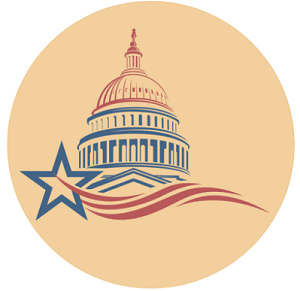
6 things to know about Pedro Martinez, Chicago’s next schools chief
September 16, 2021Who is Pedro Martinez, the San Antonio superintendent tapped to be Chicago’s next schools chief?
The graduate of Chicago Public Schools and the University of Illinois at Urbana-Champaign has become a national name in education circles over the past decade (he was previously a finalist for two of the country’s most high profile schools chief jobs: Boston and Philadelphia). He became superintendent of the San Antonio Independent School District in 2015.
He will step into the Chicago job by the last week of September as the district closes in on its first month of fully reopened schools. While student COVID infection rates have remained relatively low compared to some other districts, the reopening has brought a flurry of controversy around delayed COVID-19 testing, lags in contact tracing and notifications, and bus driver shortages that have left students stranded.
The new CEO will also have to put together a team of district leaders and fill vacancies in key positions. “Maybe there is a word to express how this goes beyond multitasking,” said Miguel del Valle, the president of Chicago’s school board, after Wednesday’s announcement.
Here are six things to know about the incoming schools chief, who is a parent to two school-aged children:
He was the first in his family to graduate from high school and college and often talks about the power of public education in his own life.
Introducing himself Wednesday outside Benito Juarez High School, his alma mater, Martinez acknowledged several of his family members in the crowd. “Chicago embraced us as immigrants,” he said of his family’s history with the city and his decision to return for his “dream job.”
Martinez’s family moved to the United States when he was 5 from Aguascalientes, Mexico, and he is the oldest of 10 surviving children.
He’s written about how the experience of growing up poor in Chicago — his father never made more than $7 an hour — and his decision to complete high school at Juarez in the city’s Pilsen neighborhood and go to college influenced several of his siblings to take a similar path.
“I know firsthand the power that education has in changing the trajectory of someone’s life,” he wrote in 2015 when he moved to San Antonio to take the schools chief job there.
Three of his sisters now teach in Chicago Public Schools, and more nieces and nephews than relatives can count are current students across Chicago, said sister Maria Martinez.
The family, she said, was surprised when he shared he was applying for the Chicago job. “We said: What are you doing? You are already in a great place.”
Martinez told his family he felt strongly about returning to the district where he graduated and served in his first education leadership role, his sister said Wednesday. “He really wanted it.”
In announcing Martinez’s appointment on Wednesday, Lori Lightfoot said she was pleased to appoint someone from the Chicago diaspora. To students, “It says quite clearly, you can be what you see,” the mayor said.
He came up through finance and does not have experience as a classroom educator.
Lightfoot faced questions Wednesday about why she decided to appoint a non-educator to the role when parents groups had been lobbying for someone with education experience. The Chicago Teachers Union highlighted his lack of classroom and in-school experience in a press release about his appointment.
Martinez’s path to school administration came through accounting roles in the private sector and the Archdiocese of Chicago. In the mid-2000s, Martinez worked as a chief financial officer in CPS under then-CEO Arne Duncan. That job, he told Chalkbeat earlier this year, “really launched my pathway to becoming a superintendent.”
Lightfoot said in announcing Martinez as CEO that his track record and history advocating for children living in poverty made him the right fit — and pointed to San Antonio’s academic improvement and “100% increase” in students gaining college acceptances during his tenure. Under his watch, the district went from earning a “C” on the state’s accountability ranking system in the 2017-2018 school year to a “B” the following year, and its graduation rate inched up, though the percentage of students graduating from high school and meeting or exceeding proficiency on state reading and math exams remained below state averages.
“He proved to everyone that, in a district where 93% of students live in poverty, he and they working together can deliver rising education outcomes,” Lightfoot said.
In San Antonio, he pushed a districtwide integration program that centered on the expansion of schools with popular programs — but it drew controversy.
Martinez faced two problems in San Antonio that are similar to ones he will confront in Chicago: economic disparities in neighborhoods and schools and a pattern of sharply declining enrollment that threatens to trigger drops in state aid.
He also had an additional challenge in 2015 when he began the San Antonio job — a new Texas law that put pressure on districts to turn around low-performing schools or be taken over by the state. Partnering with charters was a way to avoid that fate. “It left my board and I with really limited options,” he said Wednesday in response to a question about sharp criticism that the expansion of charters on his watch had drawn from the San Antonio teachers union.
His approach to winning students back and integrating the district, which serves mostly Latino students from low-income families, centered on partnering with charters, reworking school admissions rules, and expanding attractive programs, from STEM to dual language to Montessori, at campuses throughout the city. Dual language programs alone, he noted Wednesday, grew from two to more than 60 on his watch.
Among the most high-profile of those efforts was a district partnership with a charter network of high schools called the Centers for Applied Science and Technology, or CAST. The schools, which have an impressive list of university partners, tout internships and dual credit opportunities for students to simultaneously earn credits in high school and college in medical, science, and technology courses. They quickly became a draw.
But some of the new CAST campuses were criticized since the schools were allowed to pull a substantial fraction of their enrollment from wealthier areas outside city limits. That practice boosted enrollment and economic diversity but meant some local city students had to compete for seats. Criticism of such efforts sparked the hashtag #byePedro.
“We could fill all the seats with out-of-district families, which politically would not be good for me, but we could actually do that for the first time,” Martinez told state education leaders in 2018. “What families are saying to us is, this is the first time they’ve ever seen San Antonio as a district with great choices that they would want to go to.”
Martinez said Wednesday he learned several lessons from that period and that he now believes districts — not charters — are in the best position to steer turnarounds. “Charter operators can bring some interesting lessons and some good strategies, but there is no magic bullet. It really is down to the basics: ensuring that every classroom has a great teacher, every school has a great principal, and that we engage families.”
He made national news this summer for defying Texas Gov. Greg Abbott’s executive order.
Martinez made news in August when he issued a mask mandate and a staff vaccination mandate, defying Abbott’s executive order banning public entities from requiring masks or COVID shots. In response, Texas Attorney General Ken Paxton is taking the district to court.
In a letter to parents, Martinez said the mask mandate was issued “to enforce stability in our classrooms, minimize disruption to your child’s academics, and lessen hardship on families whose children are affected by quarantines for up to 14 days, or worse, illness. Absences due to COVID-19 can lead to a significant loss in days of instruction, and face coverings eliminate the need for quarantine after close contact exposure.”
“The time is now to rise to the occasion again as leaders. As a result, San Antonio ISD is issuing a mask mandate, effective immediately,” the Aug. 16 letter said.
Lightfoot said Wednesday that she was impressed by what she thought was a bold step in the interest of students and families.
His approach to pandemic recovery in San Antonio centered on boosting mental health staff and adding school days.
An unprecedented flow of federal emergency dollars for pandemic recovery has put some superintendents in a bind. They’re reluctant to invest in permanent positions because the funding tap will dry up and they’ll be on the hook for salaries — a position that Chicago Public Schools has embraced firmly even as its teachers union has called for hiring more teachers and support staff with the money.
But Martinez has been vocal about school districts seizing the unique boost in federal dollars to make much-needed investments in staff.
Consultations with parents this past year spurred the hiring of additional mental health specialists, he recently told the New York Times Magazine. “When we asked parents about how we should use our federal funds, the No. 1 need they described was mental health,” he said. “I was going to focus a lot more on academics, but I had to listen to that. We put mental-health specialists in every one of our schools.”
He also added 30 instructional days to this school calendar year — a decision he said was supported by 90% of parents and educators.
“It’s not enough to go back to normal,” he said in an interview earlier this year. “We have to be better with a capital B.”
After San Antonio ISD saw a 5% enrollment drop last school year, Martinez also led an effort to re-engage with students. Martinez had staff reach out to every student who left the district and families that didn’t enroll their children in preschool or kindergarten. That included making home visits and tapping bus drivers to make calls between routes.
Martinez has spoken strongly about the need to keep schools open — but has argued that parents need options.
Martinez says often that he’s “data driven” and has spoken nationally about the dramatic declines in student performance due to remote learning in San Antonio’s Independent School District.
“We saw sharp differences in academic achievement in our district between our children who had remote school and our children who were there in person — in some grades in math, remote school led to a 30-point drop in proficiency rates on the state assessment tests from 2019 to 2021,” he said earlier this month.
Martinez acknowledged Wednesday that his staunch stance about reopening put him at odds with the teachers union in San Antonio, but that he maintains that reopening schools is best for children. “In-person instruction is what the majority of our children — especially children of poverty — need,” he said, adding that, by the end of last school year, 70% of San Antonio’s elementary school students had returned to in-person learning.
Still, Martinez’s district was early to announce that it would still offer a fully virtual option this fall, though it’s been limited to students with certain medical conditions and their siblings, and students who’ve experienced pandemic-related trauma. (Texas won’t cover the cost of many students who are learning virtually this year.)
“The state, right now they don’t allow me to provide a virtual option, but we still did it because it’s the right thing to do,” Martinez told Chalkbeat last month. “My board and I were very clear: we’re not going to have families compromise their children with medical conditions or if they have household members with medical conditions.”
For other families, though, Martinez said the district was considering virtual schooling requests on a case-by-case basis. And he’s clear that he thinks most students learn best in person. “My children live in poverty — learning was just very difficult last year,” he said.
So far, Chicago has enrolled fewer than 1,000 children with medical conditions in a “Virtual Academy,” but parents’ groups and the city’s teachers union have called for a broader remote option. That continues to be a point of contention between the city’s teachers union and the district, and three weeks into school, the two sides have yet to reach a reopening agreement.
This article was originally posted on 6 things to know about Pedro Martinez, Chicago’s next schools chief


